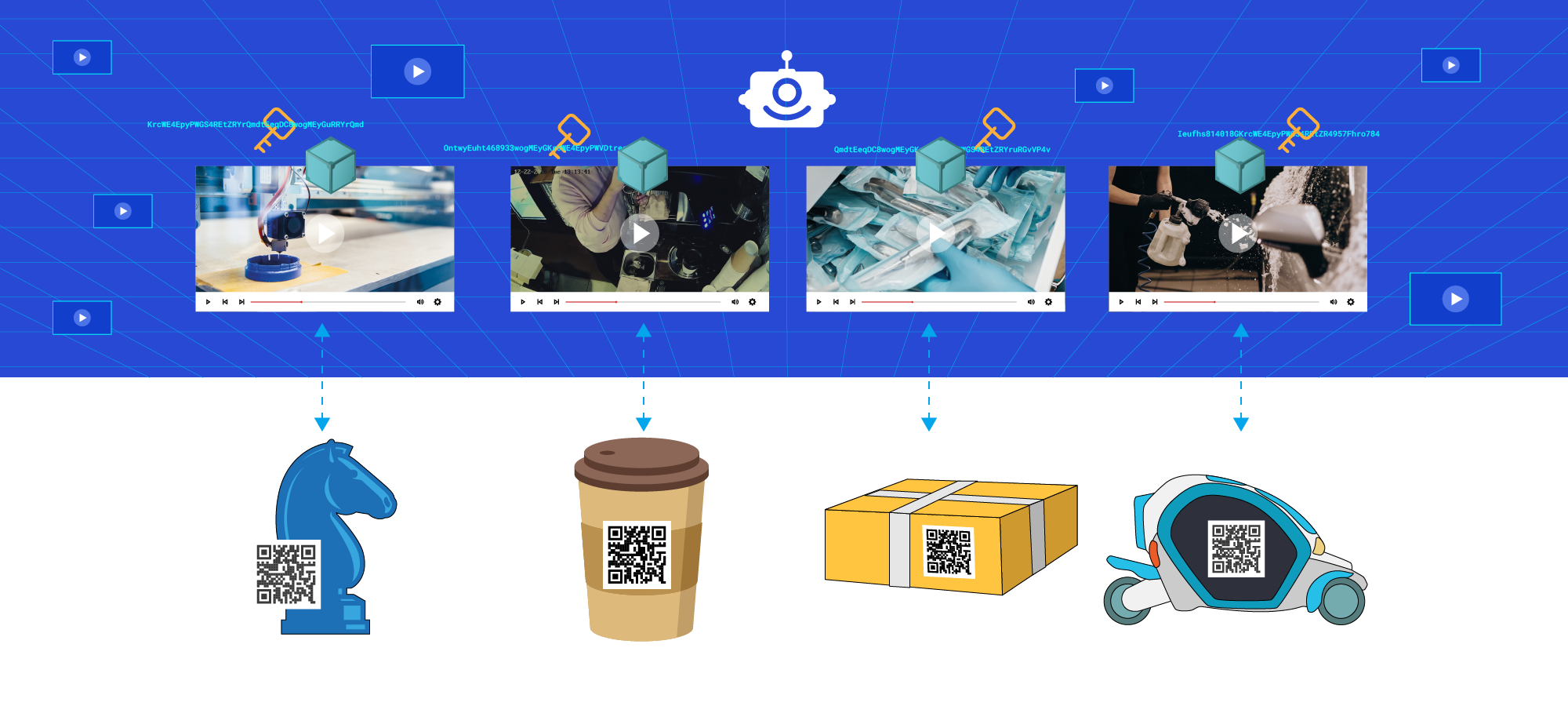FEECC: A Decentralized Manufacturing Data Accumulation System
What if a seller can provide irrefutable proof of bona fide of your.. cappuccino? And what if it is not a cup of coffee, but rather a big supply chain for a car manufacturer. Or, even more responsible, a medical equipment company? Pavel Tarasov [PaTara]
So, coffee. Say, neither was it spilled and substituted with water, nor was it a mix of old shots or something. I know, the overwhelming majority of companies value their reputation and day to day prove their integrity and coffee is the product which can’t really impact that much.
But with the medical equipment the consequences may not just be a spoiled taste. Anyway, no clue we had about medicine, but the idea behind FEECC started with a coffee experiment.
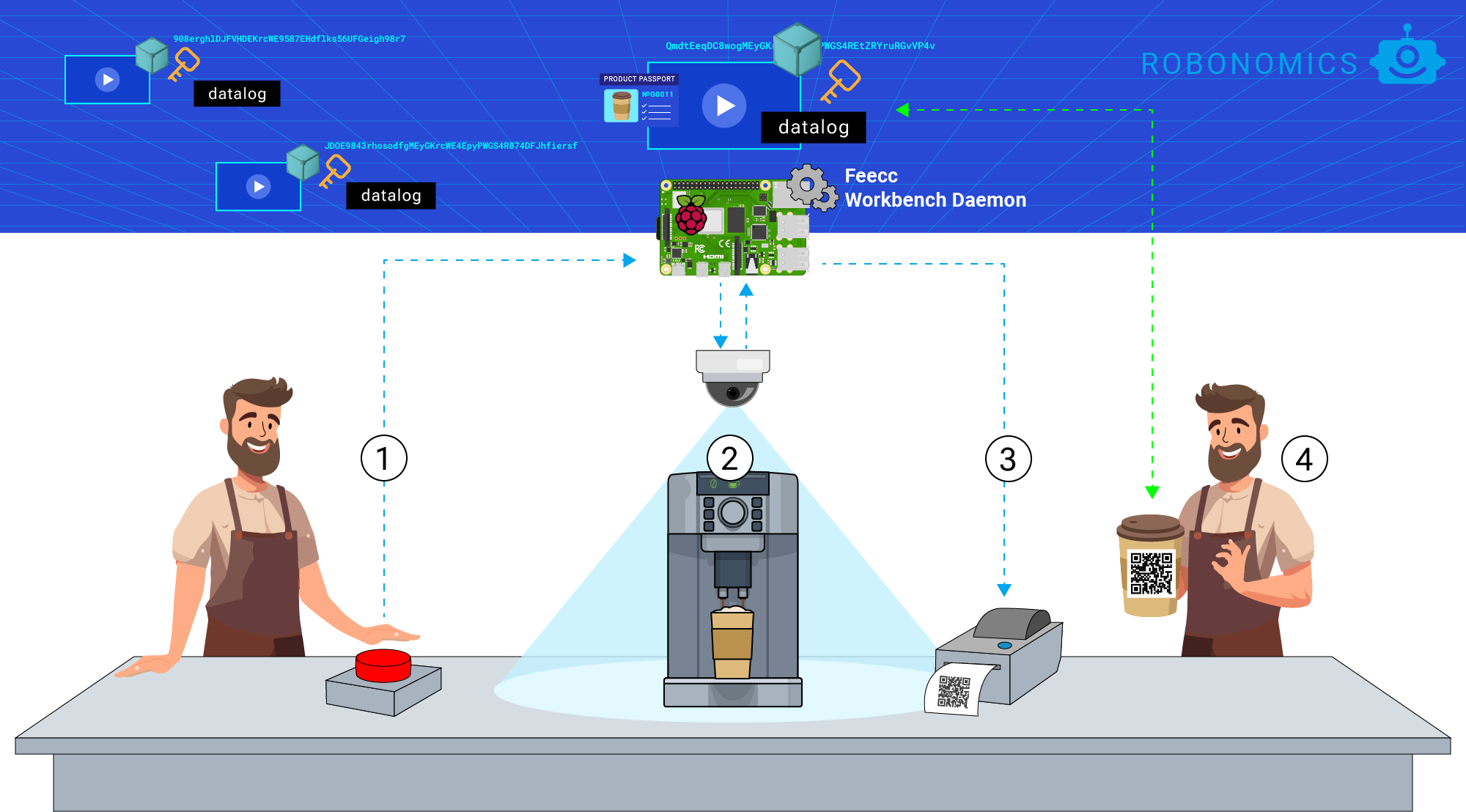
So basically this was just a recording software which was triggered via a big red button and a QR-code label printer, but beneath the hood there was a whole set of Web3 magic. First, the video wasn’t stored in a regular file system. Instead, IPFS was used. The key benefit behind this is the thing called CID - Content Identifier. A fixed-length key to find your file from all over the world (theoretically). Second and most important, the CID was put in a Datalog - a Robonomics Parachain pallet feature which allows you to store any string up to 512 bytes in a blockchain forever! This means that by putting the content-related pointer into a crypto-backed data storage you ensure the transparency and trust into that cup of coffee. You may not need it every time you take your favorite lavanda raf, but that one day it tastes bitter, you and the seller may be totally sure who’s the culprit here.
Not only a customer service, but an internal MES module.
MES stands for Manufacturing Execution System. It is responsible for manufacturing process optimization and analysis and there is a specific spot where FEECC may come in handy. See, there is a medical equipment company, EndoStars, which uses manually-assembled components and those are subject to risk of defects. Prior to FEECC installation you could never tell if the defect is a supplier fault or the assembler’s mistake. More than that, there were several processes yet to be optimized like providing assembly schemes in a digital form rather than searching through tons of papers. So after a while of development and integration processes the following scheme is now in use:
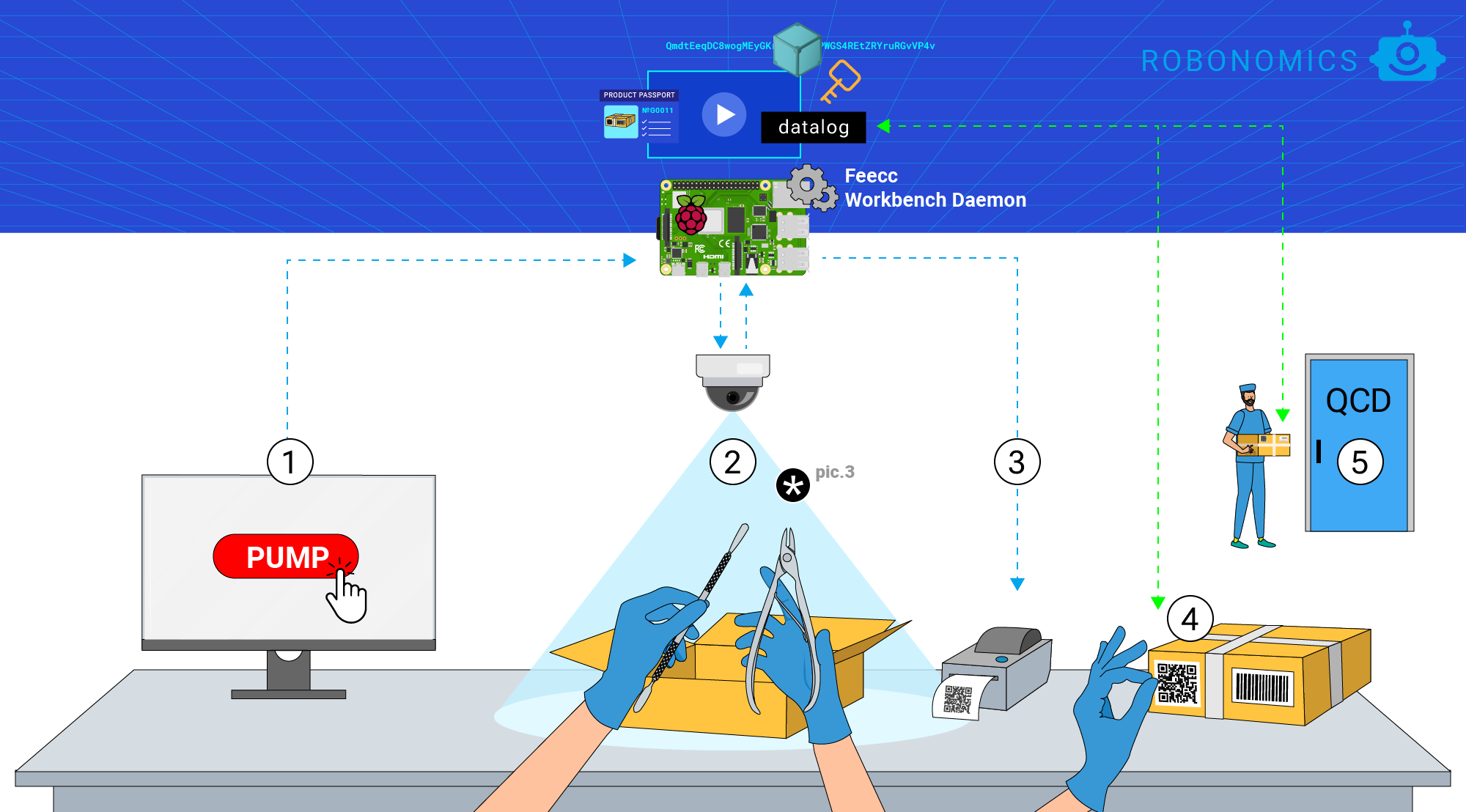
The assemblers get their parts and trigger the recording process with a web application button (this application also contains assembly instructions). Then, they get a unique barcode to stick to the part and assemble it under video surveillance. When the assembly process is finished, same as with coffee, they get the data stored in IPFS to be distributed and the CID put into the Robonomics chain to be saved forever. Optionally they may get a QR-code (database-independent) for a customer but the majority of use cases is for an inner quality control department.
Before departing the goods to the customer they perform a quality check. This process is also facilitated with some FEECC web modules and the protocol is saved in the chain as well, but the key point here is the link of the product with its assembly data (videos as for now). This link is irreplaceable since the data is in the blockchain and the address is also linked to the content itself. With that the quality control department may be sure of the innocence of their colleagues and the assemblers may protect themselves against blame.
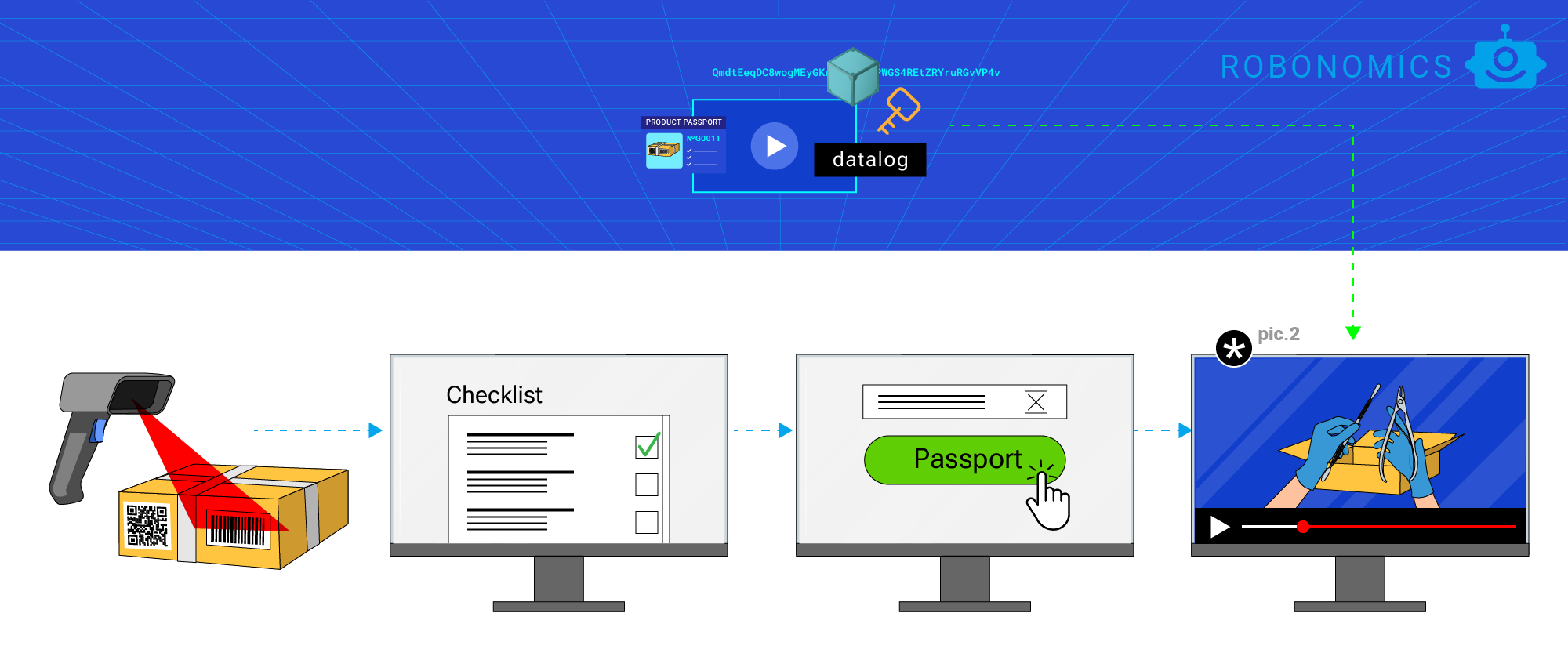
Architecture.
Below is a schemed recap of the architecture of the software used in this case. Some of the technical details are omitted but the concept itself is clear: FEECC lets you save valuable data in an irreplaceable form to avoid fraud and ensure safe supply chains. This may come with other manufacturing modules with the same core idea inside: secure and transparent data storage and use.
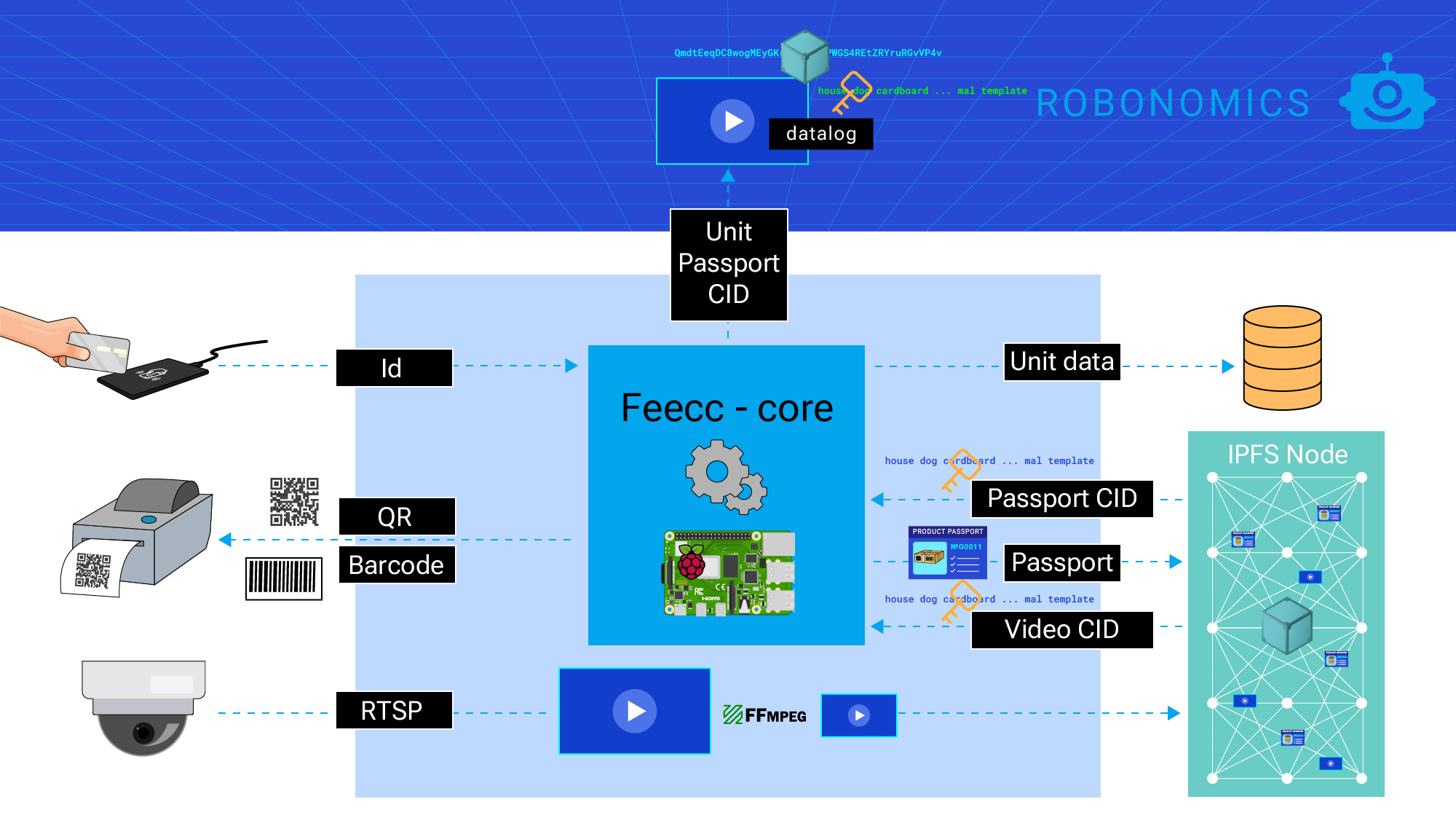
What are the numbers?
The coffee experiment started 4 years ago and the medical manufacture integration occurred in fall 2021. And we have some numbers to share:

With all that we can definitely say that FEECC is a real-life-proved Web3 application to provide secure data accumulation and storage for productions.
